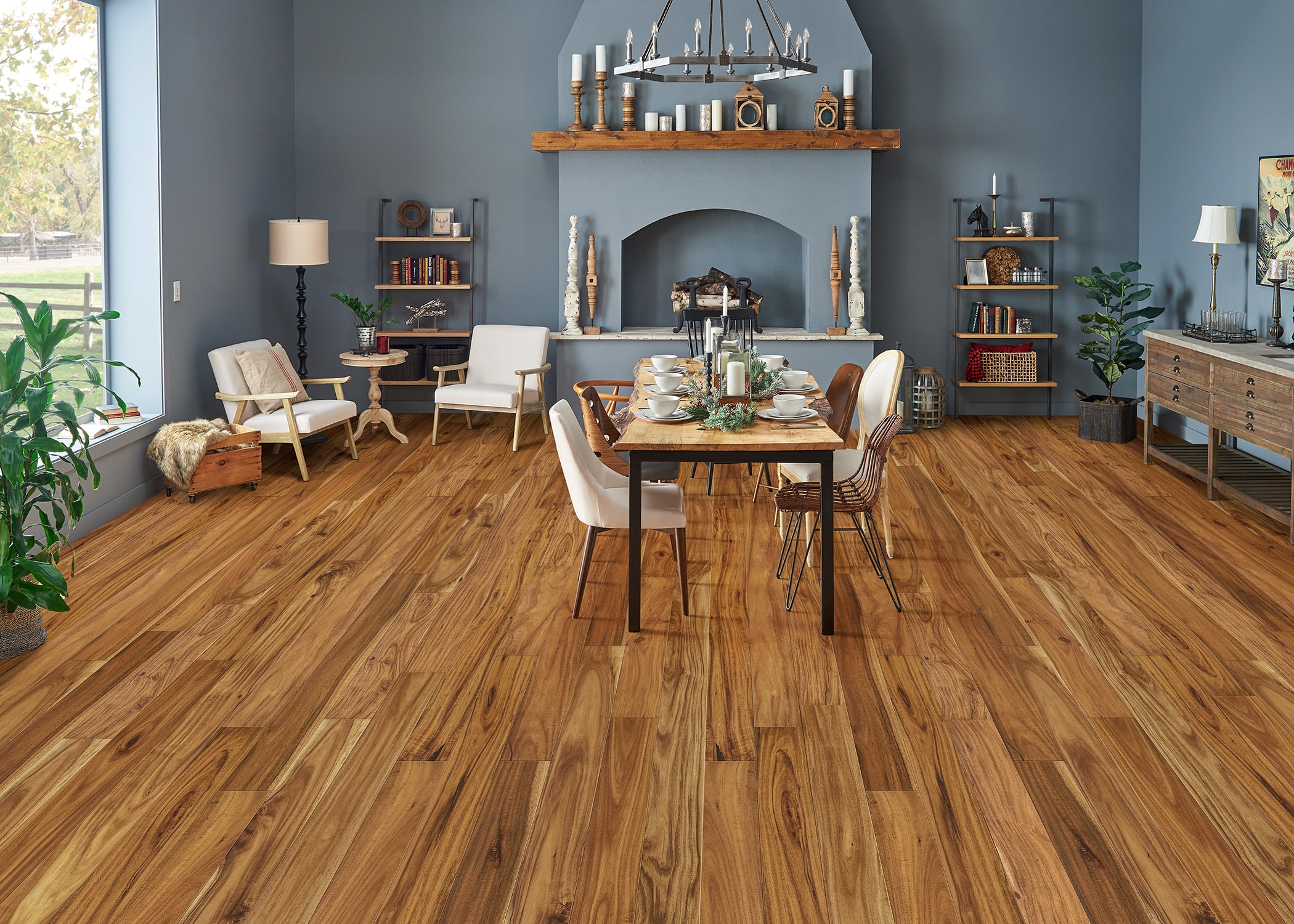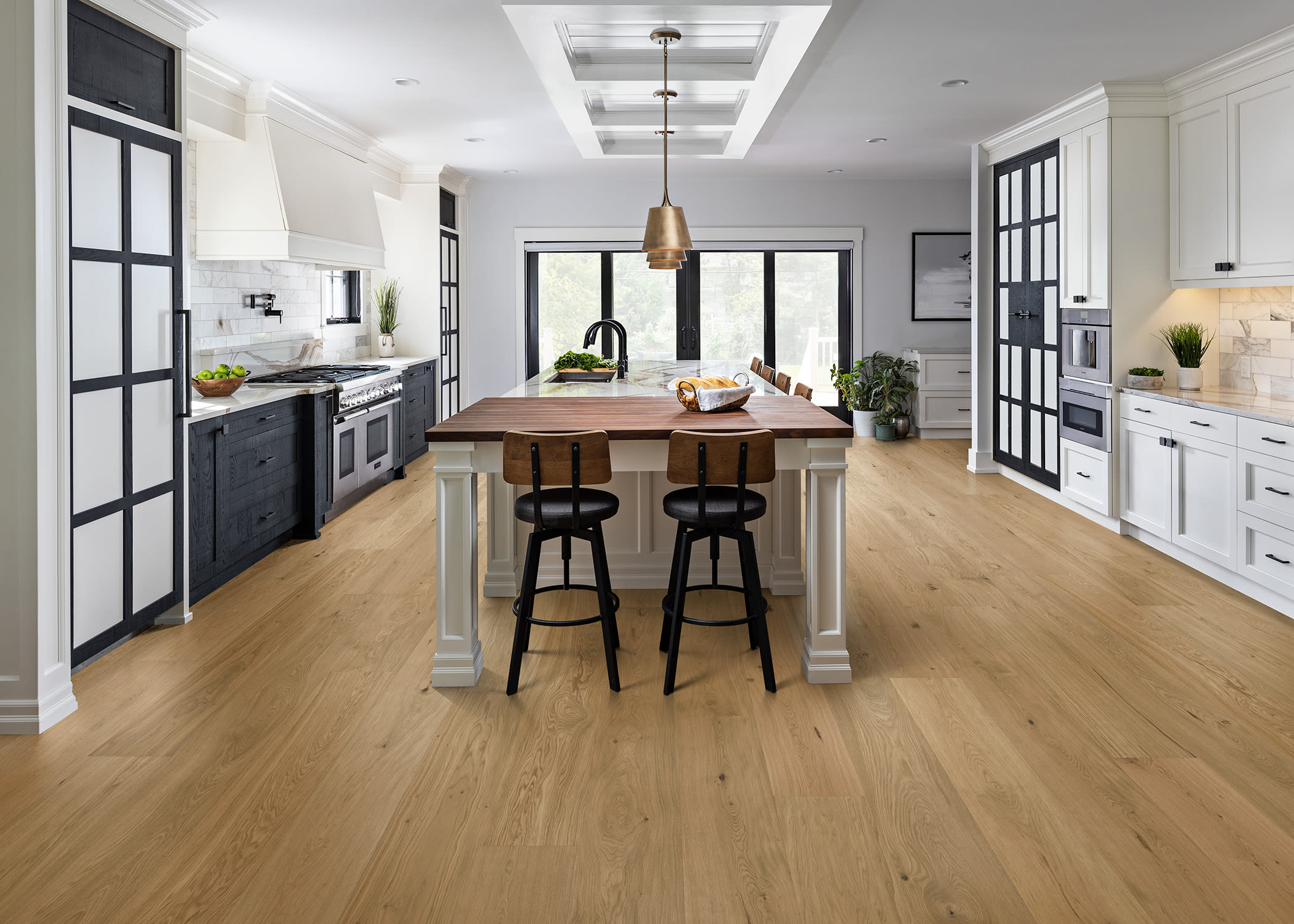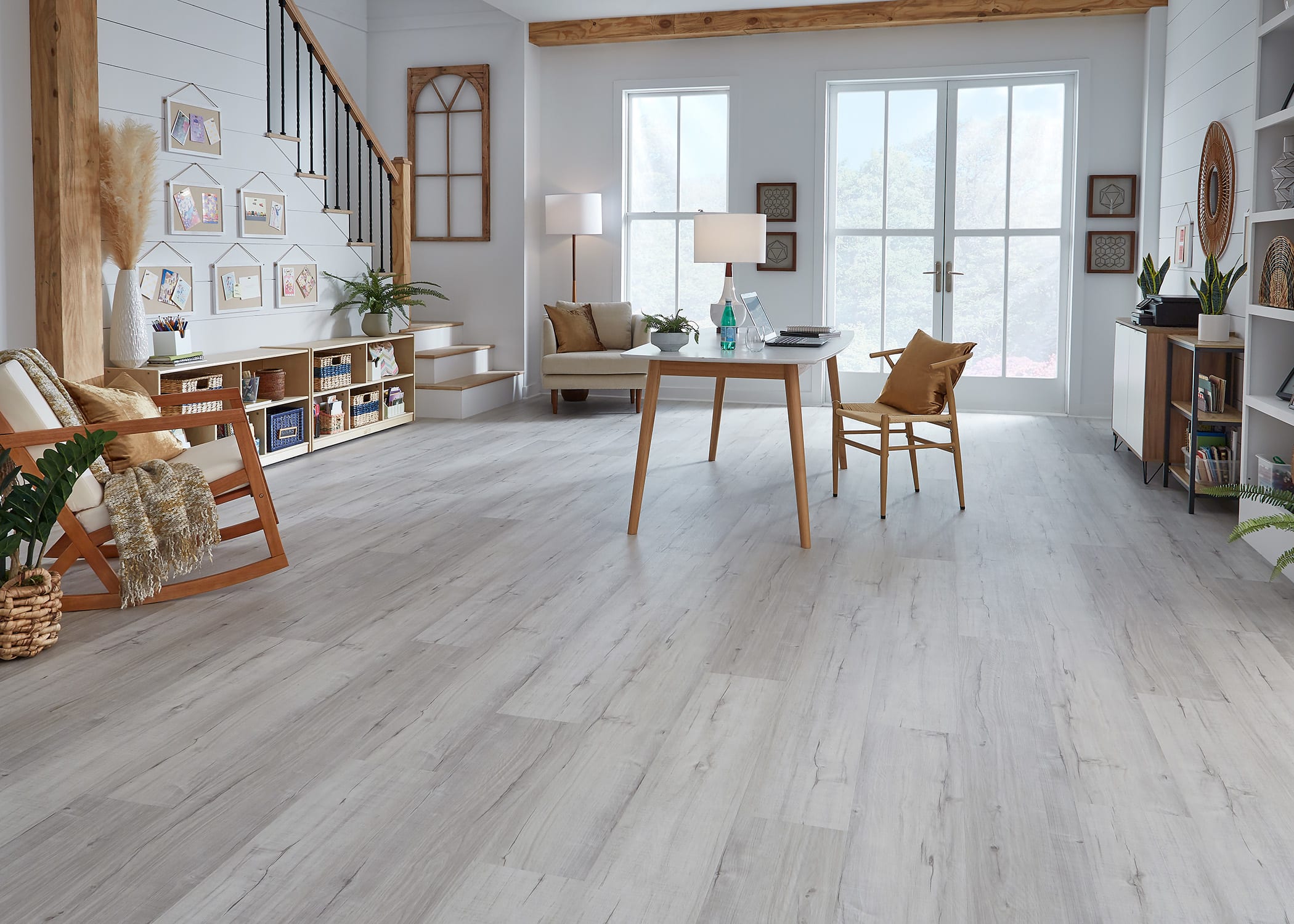- Home
- This Old House: Keep Your Home's Character During Renovation
This Old House: Keep Your Home's Character During Renovation
Whether it’s a brick Tudor or a rustic farmhouse, trying to renovate an older home can present you with quite the list of tasks. Plumbing, lighting, heating, electrical—there’s a lot of work to take care of, and that’s before you get to replacing the floors and slapping on fresh coats of paint. What’s more, in addition to being labor intensive, the nature of the home modernization process means you risk losing the unique character and historical significance that may have made you fall in love with your vintage property in the first place.

Featured floor: Virginia Mill Works' Tobacco Road Acacia Distressed Quick-Click Engineered Hardwood, 4.72 in width.
That’s why it’s important for you to have a plan that will allow you to strike the right balance between old and new. While it’s crucial to bring elements like your home’s foundation and critical systems into the 21st Century, it’s equally important to protect its history by preserving its style and unique character. In maintaining harmony between the antique and modern, you’ll ensure a unique update that can’t be replicated anywhere else. Here are a few things to consider before you get started.
Budget for Surprises
No matter what your house looks like on the outside, if it’s an older home, it probably has some surprises in store for you. You’re likely to learn that foundational repairs and system-wide replacements are necessary once you start poking around, and these sorts of renovations can quickly add up.
So, when you’re putting together your home improvement budget, always assume that you’ll need more money than you initially expect. Whenever possible, allocate some extra money to take care of those surprise repairs, and prevent them from becoming bigger, project-stopping problems down the line.
Start at the Foundation
There’s plenty of fun to be had while working with an old home’s historic charm, as the number of ways in which you can add individual twists to a vintage aesthetic virtually limitless. Before you can start playing around with that design, however, you must address what’s going on behind the walls first. Old homes are infamous for hiding significant issues, like shoddy plumbing and dangerous electrical work; you’ll want to handle such issues immediately so that you don’t have to undo any of your hard work down the line.
Before planning your major design updates, be sure to run proper diagnostics around your home to search for signs of structural damage and identify major systems in need of replacement. By dealing with those costly issues up front, you’ll be setting you and your renovated home up for long-term success as you move on to the design phase.

with crown molding and carpentry, and the rustic addition of a butcher block island top.
Featured floor: AquaSeal's 'Faroe Island White Oak' Water-resistant Hardwood Flooring (Engineered).
Preserve the History
If you’re like most, the reason you picked a vintage home to renovate was the rich history and unrivalled charm that comes with it. Whatever era your home comes from, the key to a successful update is respecting the original style and, where possible, making complementary updates to accent that style without altering its essence.
Take hardwood floors, for example. They’re one of the most prominent historical features of many older homes, but in many cases, they’re run down, worse for wear, and in need of serious love and care. A tasteful replacement is what’s needed in such cases, and thankfully, you can install a new hardwood floor to breathe new life into your vintage home while still keeping it in line with its traditional appearance. The selection from LL Flooring, for instance, with options like Bellawood Somersworth Oak and Select Maple hardwood flooring, perfectly fits such purposes, and will allow you to give your home a timeless upgrade that seamlessly blends with its antique features.

Featured floor: CoreLuxe's 'Juneau White Oak' Waterproof Vinyl Plank with Attached Pad.
Post your renovation photos on Facebook or Instagram and tag @LLFlooringOfficial for a chance to be featured on our page!
-LL Style